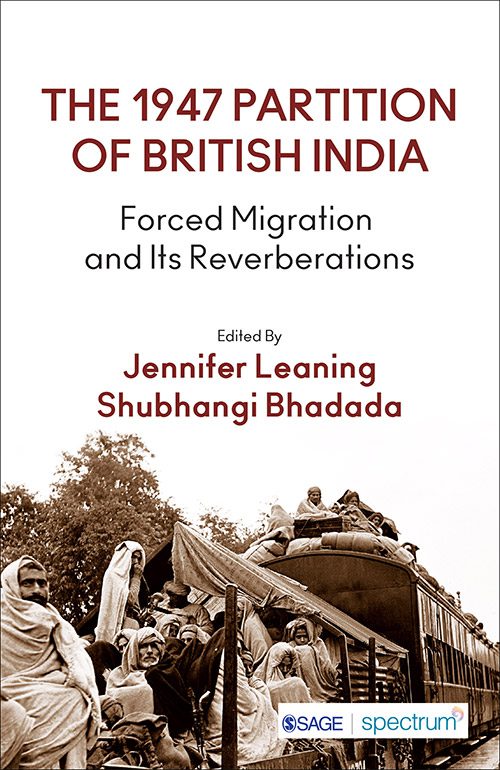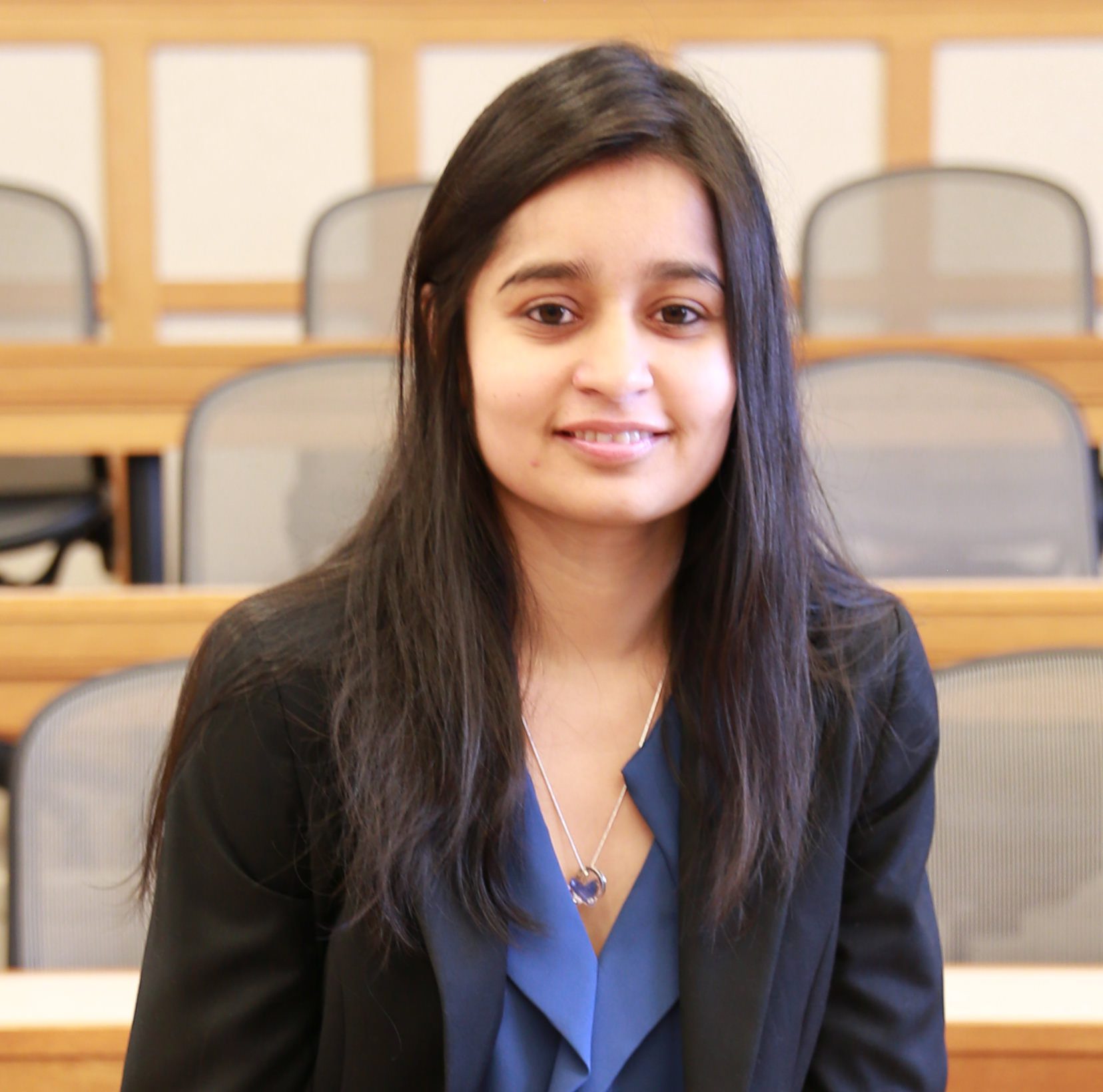The newly published book, The 1947 Partition of British India: Forced Migration and Its Reverberations, is the first collection related to Partition studies to bring together experts of various disciplines from the three major modern nation-states affected by this cataclysm – Bangladesh, India, and Pakistan – to closely collaborate to develop a nuanced assessment of the Partition. It is edited by LMSAI Steering Committee member Jennifer Leaning, Senior Research Fellow at the Harvard FXB Center for Health and Human Rights and retired Professor of the Practice at Harvard T.H Chan School of Public Health, and Shubhangi Bhadada, Mittal Institute Fellow. We spoke with Jennifer and Shubhangi to learn more about the editing process, and what they hope people glean from the compilation.
Join them at Harvard University (Belfer Room, CGIS South) on November 16 at 5:00 pm EST for the Cambridge launch of their book.


Shubhangi Bhadada.

Jennifer Leaning.
Mittal Institute: This book was a labor of love for the both of you. Can you talk to us about its origins – how did this idea develop? And how did you decide to partner together?
Shubhangi Bhadada: I became involved with the project in November 2016 when Jennifer had already brought together the researchers in region but some of the research strands at Harvard, such as the oral narratives project (led by Profs. Tarun Khanna and Karim Lakhani), were just being conceptualized – those were the pieces I initially got involved in. My role eventually grew to working directly with Jennifer to conduct the research but also bring everyone together – coordinating the various pieces of research and researchers across five countries. I have learned so much from Jennifer in these last five years and cannot imagine a better mentor and partner who could have brought this project together so masterfully.
Jennifer Leaning: My astonishment at the numbers who moved and died—resulting from a demographic study I did with experts in demographics and statistics (published in 2008 in Population Studies)—led me to seek to understand how such an episode of forced mass migration could possibly have arisen and how it could have possibly have been addressed from a humanitarian perspective. The quest for records in many libraries (including Widener and the India Office of the British Library) took several years. The Weatherhead Center supported this initial effort and the Mittal Institute then began to serve as my home base for guidance and advice. With the support of Meena Hewitt, then Executive Director, and Tarun Khanna, Faculty Director, I began to reach out to colleagues in South Asia who could provide grounded insights from their professional perspectives. Meena enlisted Shubhangi, and with her on board, the outreach and rich deliberations moved into high gear. Shubhangi has become a key partner in this enterprise and has helped shape this book as truly a joint effort of many. For that I am deeply humbled and thankful.
Mittal Institute: Can you give us a synopsis of the book? Are there any overarching themes throughout the collection?
Shubhangi Bhadada: The book is the first such interdisciplinary effort to study Partition where we have brought together researchers from all three impacted countries (Bangladesh, India, and Pakistan) to study the largest instance of forced migration in recorded human history and the insights we can learn about the complexities of involuntary population displacement. The book is divided into three broad sections: migration and relief during Partition; memories of Partition; and cities, art, and architecture related to, and influenced by, Partition. The book attempts to cast a somber, but at the same time, an uplifting perspective on how people, society, organizations, and the government came together to help, build (or rebuild), and in some cases, prosper from the trials and tribulations of Partition and its enduring impact on the region.
Jennifer Leaning: We are 75 years out from this traumatic experience for hundreds of millions of people. So inevitably we are dealing with memory, loss, and the cumulative impact of decades of struggle to create three countries out of what historically was one complex subcontinent. In addition to what Shubhangi has said, I am struck by how extraordinary were the efforts of government and civil society in the early years to survive and support their people through such a crucible of recovery and reconstruction.
The book is the first interdisciplinary effort to study Partition where we have brought together researchers from all three impacted countries to study the largest intense of forced migration in recorded human history.
Mittal Institute: What was shepherding this book along like – how did you find contributing authors; how was the editing process; and did you contribute any chapters yourselves?
Shubhangi Bhadada: As I mentioned earlier, Jennifer was instrumental in bringing together the various researchers and experts from within the region and at Harvard as collaborators and contributing authors to the project. We also had multiple interactions between and among all the contributors, including in-person workshops in Cambridge in March 2017 at the Radcliffe Institute; Lahore and Delhi in August 2017; and various online meetings over a period of two-to-three years. It allowed researchers to interact and collaborate across borders and disciplines and really enrich their individual research. The editing process was an iterative process – between Jennifer and me, but also with the authors themselves – working with them across time zones and through the months to shape it to the final product. I am a co-author in two chapters of the book that came out of our oral narratives research in addition to the introduction – one that describes the process and mechanics of how we collected the oral narratives of Partition survivors across the region and the second chapter discusses the role that social networks played.
Jennifer Leaning: My focus was on issues of early warning and the humanitarian response in the first months, as assessed in the first chapter of the book. We were fortunate that most of the authors could persist with us in a process that took years. A few excellent participants could not, for varied reasons, continue with us through the publication process but they remain, along with the chapter authors, very good colleagues and friends. Everyone was respectful, resourceful, and persistent. Collectively, we proceeded together with much mutual respect. I feel very fortunate that Tarun Khanna and the Mittal Institute supported me, Shubhangi, Meena, and now Hitesh Hathi in creating this community and publishing this book.
We were fortunate that most of the authors could persist with us in a process that took years. I feel very fortunate that Tarun Khanna and the Mittal Institute supported me, Shubhangi, Meena and now Hitesh Hathi in creating this community and publishing this book.
Mittal Institute: What is the one thing you hope readers take with them from this book?
Shubhangi Bhadada: The one thing I hope that readers take with them from this book is the multi-faceted and enduring impact of Partition on the region – not just the people who experienced it but how it has shaped the subcontinent’s cultural, economic, political and social dimensions in the last 75 years, including architecture, art, demographics, language, and society.
Jennifer Leaning: I share Shubhangi’s hope.
Mittal Institute: You both have been heavily involved in LMSAI’s Partition research from the beginning. Do you have any more Partition projects or research on the horizon?
Shubhangi Bhadada: I currently don’t have any new research planned related to the Partition in the immediate future but would love to work on it again and delve even deeper on some of the themes and research we gathered, particularly related to the oral narratives – there is a wealth of information there that would be helpful to researchers of Partition across various disciplines.
Jennifer Leaning: It would be excellent if Shubhangi and others were indeed to pursue the opportunity afforded by these strategies of crowd-sourcing memories. As Tarun notes in his extensive discussion of the uses of memory (the concluding chapter of the book), the crowd-sourcing technology may serve to enliven and expand our understanding of the impact of Partition on those who have not yet been reached to tell their story. Much new information may arrive through this route.
For my part, I may write more extensively about the early Partition humanitarian response. And for others, perhaps there will be future ventures?
